#ibm 360
Explore tagged Tumblr posts
Text

IBM 360 mainframe in Germany, 1965. Photo by Rolf Herkner.
597 notes
·
View notes
Text

Image detail from the IBM System/360 sales brochure - 1964.
#mainframes#mainframe computers#computers#computing#vintage computers#vintage tech#vintage technology#computer systems#computer scientists#computer engineering#vintage electronics#calculating devices#ibm#ibm system/360#ibm 360#ibm system 360#big blue#vintage advertising
25 notes
·
View notes
Text

1960s IBM tape units from the System/360 series- I used to draw these computers quite a bit back in grade school, and it has brought me great joy to revisit these machines on canvas.
'IBM 2401s' - 30" x 40" Oil on Canvas
#oil painting#artists on tumblr#old computers#vintage technology#vintage computing#vintage computer#ibm#mainframe#ibm 360#1960s#vintage mainframe#computer art#technology art#old tech#retro computing
2 notes
·
View notes
Text

USA 1993
#USA1993#TRIAX TECHNOLOGIES#HARDWARE#CONTROLLERS#IBM#C64#ATARIst#AMIGA#SNES#NES#SEGA GENESIS#SEGA MASTER SYSTEM#TRIAX TURBO TOUCH 360
114 notes
·
View notes
Photo

IBM System/360
81 notes
·
View notes
Text
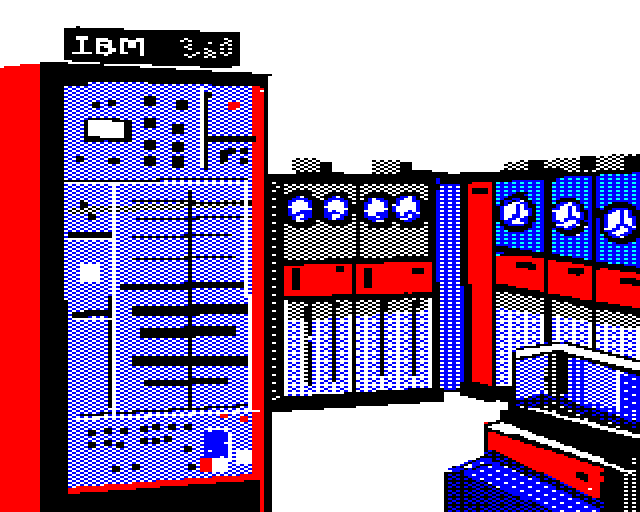
Mistigram: @blippypixel has drawn this #BBCMicro animation of a #mainframe computer suite (and its 9-track vacuum column magnetic tape drives!) from the flexible #IBMSystem360 family of machines, sold for a bit over a decade starting in 1965. This piece was included in the MIST1121 artpack collection.
90 notes
·
View notes
Photo
IBM System/360 Model 85
The IBM System/360 Model 85 was a high-end member of the System/360 family of computers, announced in January 1968 and first shipped in December 1969.[1] Some key facts about the Model 85:
- It had many advanced features, including a cache memory system that was the first commercially available computer with this technology. The cache allowed the Model 85 to have an effective memory cycle time of 1/3 to 1/4 of the actual main memory cycle time.
- It used monolithic integrated circuits and had enhanced floating-point capabilities, including 128-bit quadruple-precision floating point.
- The Model 85 was the second System/360 computer to have writable control storage, after the Model 25.[1] This allowed it to use microcode to control instruction execution, unlike the fully hardwired Model 75 and 91.
- It provided emulation capabilities to run programs from older IBM systems like the 709, 7040, 7044, 7094 and 7094 II.
- The Model 85 was seen as a precursor to the later System/370 line, incorporating features like block multiplexor channels that would become part of the 370 architecture.
- Due to a recession, IBM only built around 30 Model 85 systems, as it was a very high-end and expensive machine.

IBM System/360 Model 85
850 notes
·
View notes
Text



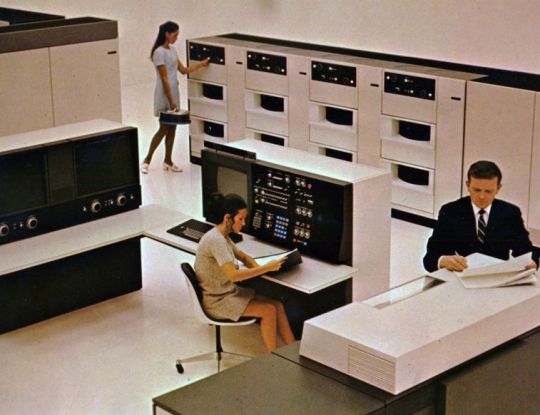


IBM System/360 & System/370 mainframes
#ibm#ibm system 360#ibm system 370#mainframes#computing#computers#mainframe computers#1960s#1970s#history
1 note
·
View note
Video
Converting to IBM System/360, 1964 by Colorcubic™ Via Flickr: colorcubic.com/2010/06/04/ibm-system360/
#Photography#Scientific applications#Digital computer#mainframe#COBOL#FORTRAN#promotional materials#Business applications#Software#System/360#International Business Machines Corporation#IBM#flickr
0 notes
Text

Rhonda tweaking the dials on an IBM System/360 - 1966.
#mainframes#mainframe computers#computers#computing#vintage computers#vintage tech#vintage technology#computer systems#computer scientists#computer engineering#vintage electronics#calculating devices#ibm#ibm system/360#ibm 360#ibm system 360#big blue
18 notes
·
View notes
Photo
IBM System/360, c. 1960s.
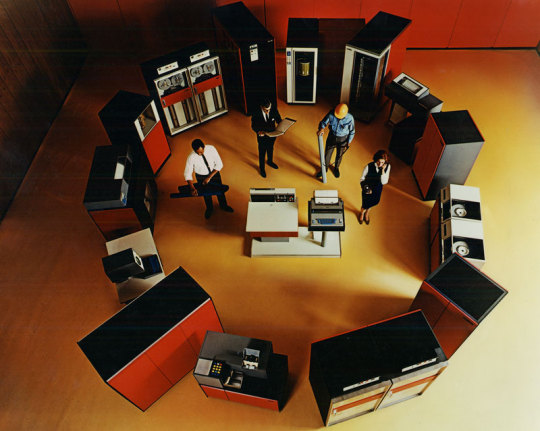
881 notes
·
View notes
Text

IBM System/360 at the University of Michigan, 1971.
(University of Michigan)
173 notes
·
View notes
Text
You might have heard of 32-bit and 64-bit applications before, and if you work with older software, maybe 16-bit and even 8-bit computers. But what came before 8-bit? Was it preceded by 4-bit computing? Were there 2-bit computers? 1-bit? Half-bit?
Well outside that one AVGN meme, half-bit isn't really a thing, but the answer is a bit weirder in other ways! The current most prominent CPU designs come from Intel and AMD, and Intel did produce 4-bit, 8-bit, 16-bit, 32-bit and 64-bit microprocessors (although 4-bit computers weren't really a thing). But what came before 4-bit microprocessors?
Mainframes and minicomputers did. These were large computers intended for organizations instead of personal use. Before microprocessors, they used transistorized integrated circuits (or in the early days even vacuum tubes) and required a much larger space to store the CPU.
And what bit length did these older computers have?
A large variety of bit lengths.
There were 16-bit, 32-bit and 64-bit mainframes/minicomputers, but you also had 36-bit computers (PDP-10), 12-bit (PDP-8), 18-bit (PDP-7), 24-bit (ICT 1900), 48-bit (Burroughs) and 60-bit (CDC 6000) computers among others. There were also computers that didn't use binary encoding to store numbers, such as decimal computers or the very rare ternary computers (Setun).
And you didn't always evolve by extending the bit length, you could upgrade from an 18-bit computer to a more powerful 16-bit computer, which is what the developers of early UNIX did when they switched over from the PDP-7 to the PDP-11, or offer 32-bit over 36-bit, which happened when IBM phased out the IBM 7090 in favor of the the System/360 or DEC phased out the PDP-10 in favor of the VAX.
154 notes
·
View notes
Text
The early days of terminals are not something I consider myself an authority on, but I have a few ideas of what might qualify as the first production glass terminal with a detachable keyboard. Note to the uninitiated: the game of "who did what first" is a source of constant debate within the community. Every "first" you see should be prefaced with a few qualifiers.
The IBM 2260 from 1964 looks like the keyboard should separate from it, but I can't find a photo to back that up.

My second guess would be the Sanders 720 data display system from 1967.

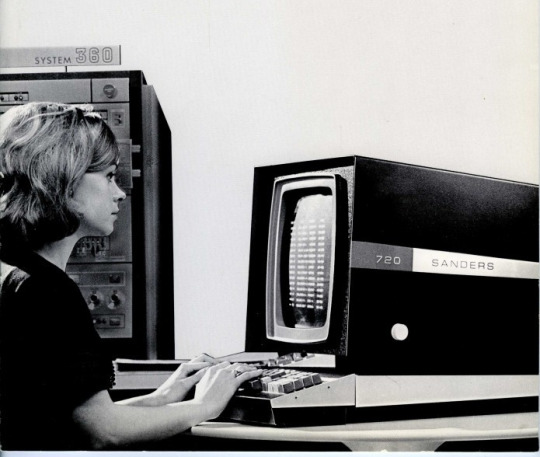
Most photos make it look like the keyboard is directly attached to the monitor base, bolted on with pieces of trapezoidal aluminum. However, you could also have the keyboard configured in a detached state, and move it around a short distance. I just so happen to have a Sanders 720 keyboard!

Even on the models where the keyboard appears attached, it's got a structural housing all its own, with a connector and cable on the back:
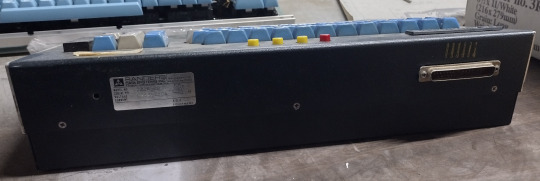
Bolts on with a big fat DC-37 connector. Mine came with the cable, but it's only about a foot long. I wish I had the rest of the terminal to go with it.

Many of the terminals of this age were not general purpose serial terminals like later 70s designs. These had special interface hardware to make them do anything useful. What you're not seeing is the big box of electronics that allows it to talk to the mainframe behind it.
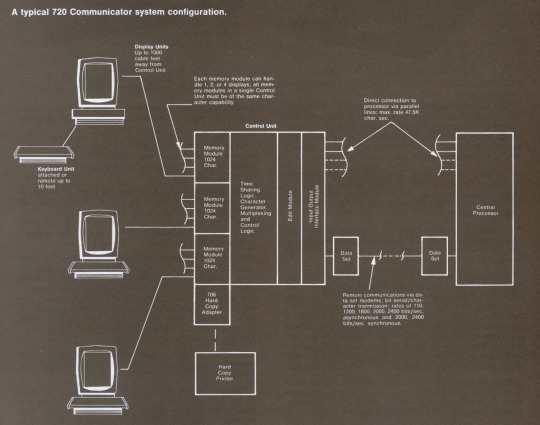
Flip through the documents on Bitsavers if you want to learn more about it. For now, those are my guesses of what might be the "first" terminal with a detachable keyboard.
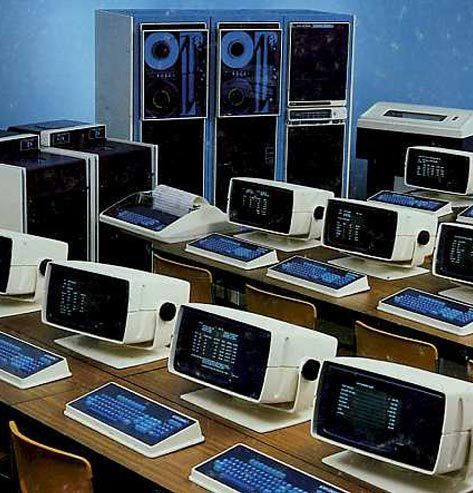
938 notes
·
View notes
Text
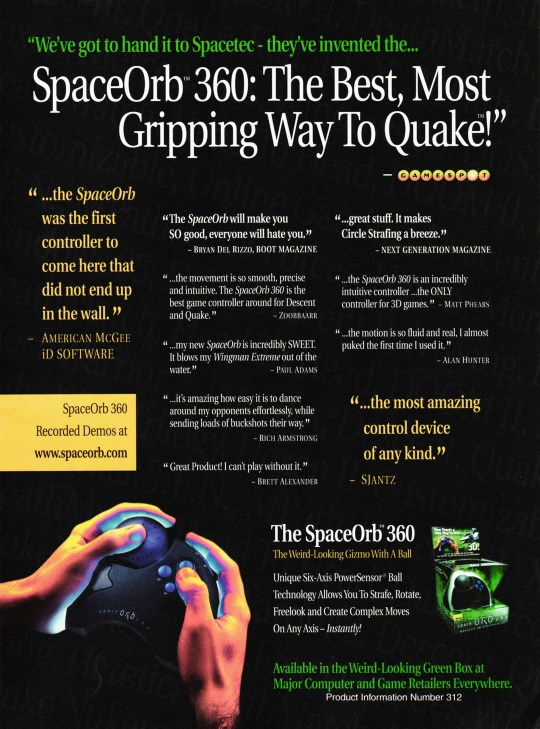
USA 1997
53 notes
·
View notes
Photo

IBM System/360
719 notes
·
View notes